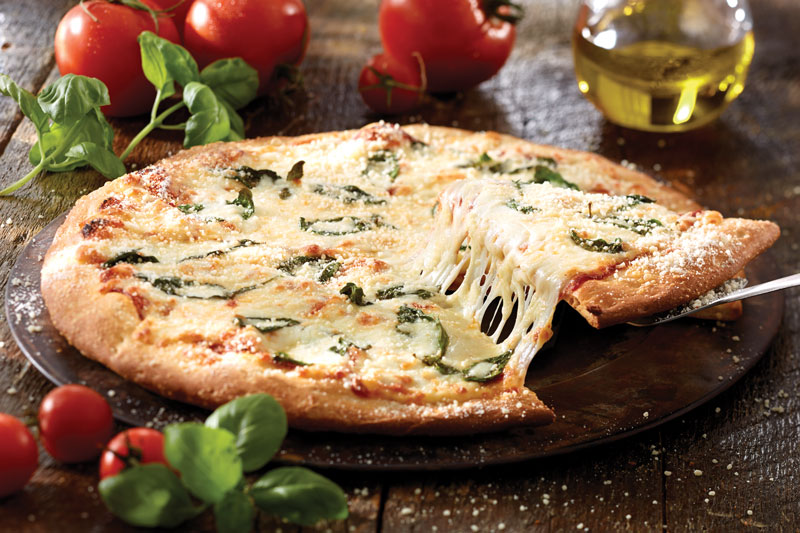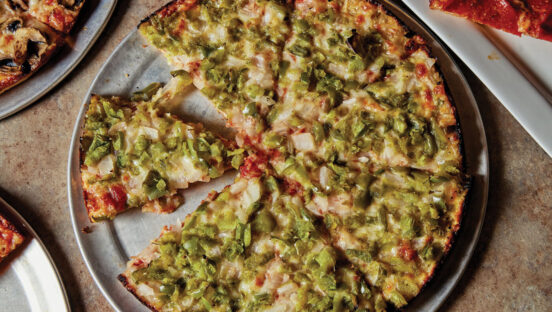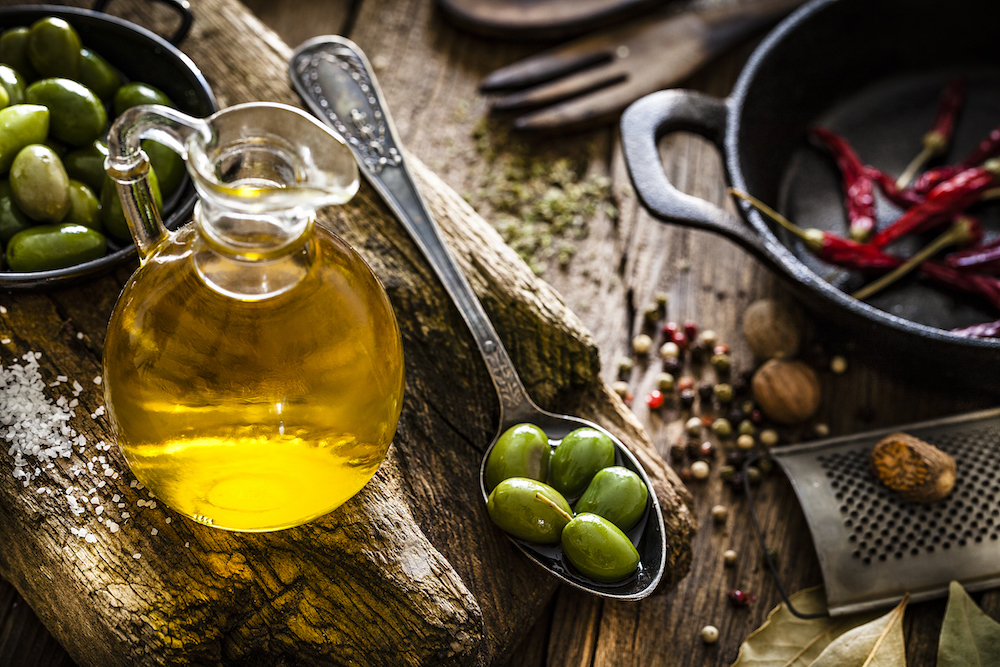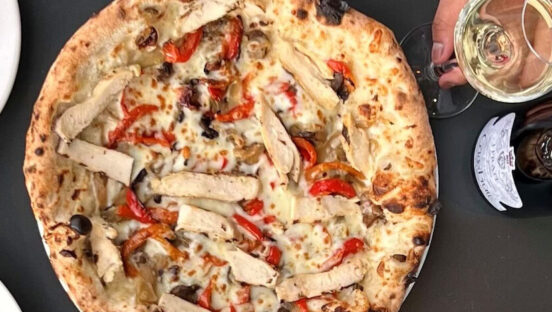The world of cheeses is vast, perhaps even intimidating, for the average pizzeria operator. According to the International Dairy Foods Association, the art of cheesemaking reaches back more than 4,000 years, and roughly 2,000 varieties exist today. From Italian staples such as mozzarella and Parmesan to pungent Limburger, buttery burrata and creamy brie, the range of tastes and textures is downright astounding.
Yet many pizza craftsmen never step outside their comfort zones when it comes to selecting the unexpected—a missed opportunity, considering cheese consumption is on the rise. The average American consumes 34 pounds of cheese annually, a growth of 43% over the past 25 years, and per capita spending on cheese has increased 37% since 2008, according to USDA statistics.
Basics such as mozzarella and Parmesan likely already grace your menu, but adding depth to pies by piling on a few extra cheeses will hike up the wow factor, intensify flavor and offer customers more variety. Learn from these successful operators, from single-unit independents to multiunit chains, who are melting customers’ hearts (and taste buds) with menu innovations that combine multiple cheeses.
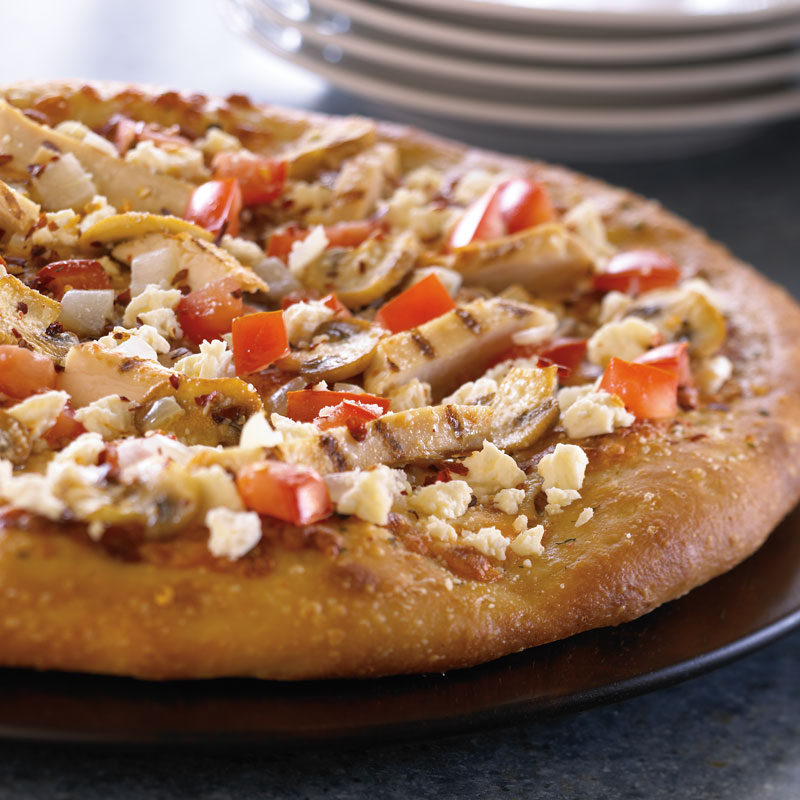 |
|
Flavorful cheeses, such as feta and goat, can help rev up the depth of flavor on specialty pies more than run-of-the-mill mozzarella—and though they can be costly, a little goes a long way. Photo by Toppers |
Cracking the Combination
| Cheese in 2016 |
| The Wisconsin Milk Marketing Board recently pinpointed some top cheese trends that will drive consumers’ purchasing habits in 2016:
Authenticity—Consumers look to purchase locally, and they’re willing to pay more when they know where their foods come from. Bold Flavor—Flavored cheeses—those made with hints of jalapeño, herbs, garlic and even berry—are expected to outperform unflavored varieties in the year ahead. Freshness—Sales of cheese curds have risen by 7% in foodservice, with menu mentions up by 13%. Tradition—Cheesemakers are perfecting the aging process while returning to more traditional methods, such as underground aging caves. |
Combining a bevy of cheeses can quickly create a pie overwhelmed with flavors—or one in which no cheese is allowed its share of the spotlight—so it’s important to think about the texture and flavor of each component and how the cheeses work together. “When making multicheese pizzas, we try to find combinations that offer contrasts, either texturally, visually or taste-wise, without any one cheese overpowering the other,” explains Alan Cooke, owner of Rebel Pie Wood Fired Pizza in Florence, South Carolina. “For example, when using Pecorino Romano, we like to put it on last, because it browns nicely and gets a little crispy in our wood-fired oven, offering a textural and visual contrast.”
Rebel Pie offers two multicheese pizzas on its everyday menu. Its regular Cheese pizza packs more flavor than the usual “plain” pie, with fresh whole-milk mozzarella, Parmesan and Pecorino Romano atop a red-sauce base, while the Quattro Formaggi combines housemade béchamel sauce, whole-milk mozzarella, Parmesan, feta and Pecorino Romano. Cooke also stirs customer excitement with a specialty, limited-time-only Pie of the Month; last December, a multicheese pizza was featured, with housemade white sauce, oven-roasted garlic, whole-milk mozzarella, smoked Gouda and Pecorino, topped with white wine-braised mushrooms. “The Quattro Formaggi is one of our most-ordered pizzas, popular with kids and adults alike,” Cooke notes. “Adding pepperoni is very popular as well, because the spice and meatiness of the pepperoni cuts the pizza’s richness. Our December Pie of the Month was also very popular.” Indeed, social media lit up with fan appreciation when he posted a pic of the cheesy special on Rebel Pie’s Facebook page; one follower commented, “Incredible! If you haven’t tried it yet, you must!”
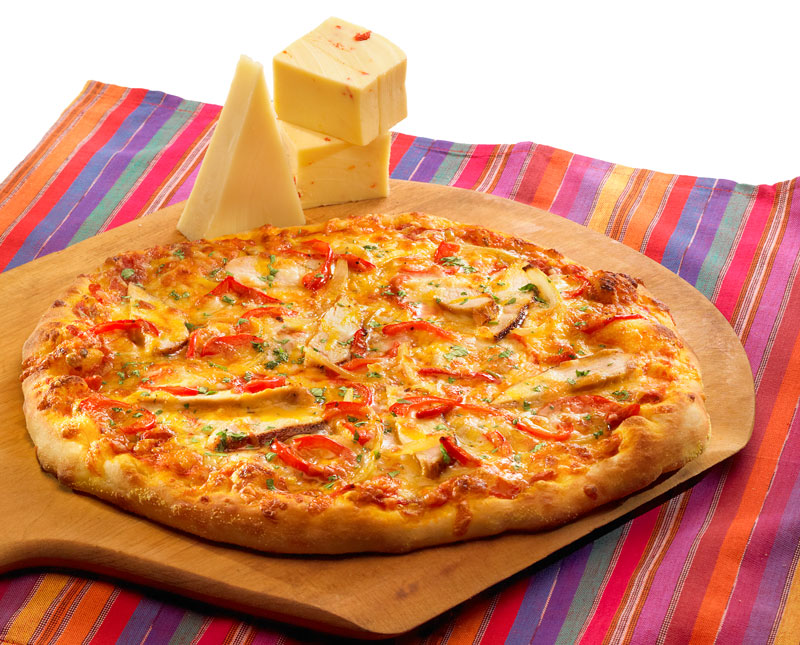
Chicken Santa Fe Pizza |
| Provided by Wisconsin Milk Marketing Board
Ingredients: Directions: Sauté peppers and onions with remaining garlic in olive oil. Season with salt and pepper; add white wine. Cook 3 minutes, keeping vegetables firm. Remove from heat and set aside. In a small bowl, mix marinara and salsa together for the sauce. Set aside. Form dough into a 12” circle and place on a pizza pan. Spread sauce over the dough; sprinkle cheddar and mozzarella on top. Top the pizza with reserved peppers and onion, then chicken and Havarti. Bake for 10 to 12 minutes. Sprinkle with cilantro. Serves 4. |
At Master Pizza, based in Cleveland and with six locations in Ohio, owner/CEO Michael LaMarca recently added a brand-new cheese-laden pie that he vowed would “top all of the cheese pizzas out there” by going beyond the typical four-cheese template. The “Sei Cheese Pizza” (pronounced “Say Cheese”—“sei” means “six” in Italian) starts off with a base of white cheesy garlic sauce, topped with Swiss, American, a cheddar-jack blend, provolone and mozzarella, finished with a dusting of parsley and Parmesan cheese. “We find that combining different types of cheeses with different textures, as well as blending sharp and mild cheeses, really makes each cheese stand out on its own,” LaMarca says. “I would also recommend not using your traditional red tomato sauce; instead, use a garlic butter sauce, which will blend far better.”
Keeping multiple cheeses in stock is also a must for fast-casual operations; Firenza, a build-your-own concept with two locations in Virginia, offers eight different cheeses, and customers can load up on as many as they wish: shredded mozzarella, provolone, Ovolini (fior di latte), cheddar, shredded Parmesan, ricotta, feta and Gorgonzola. “We have a mouthwatering pizza, the Pizza Roma, that combines our tomato sauce with the perfect blend of five cheeses: mozzarella, provolone, feta, cheddar and Parmesan,” says Dave Wood, co-founder of Firenza. “The beauty of this pizza’s flavor explosion comes from the differences among the cheeses; mozzarella has a creamy flavor, while provolone has the tiniest touch of bite, feta provides a slight salty goodness, cheddar has a full-bodied flavor, and Parmesan is the perfect topper.”
“Balance and flavors that complement each other are great ways to start, and a little bit of experimenting goes a long way,” adds Firenza co-founder Dave Baer. For example, he notes, a light sprinkling of cheddar makes a great addition to beef and bacon pies, creating a “cheeseburger effect” that customers crave.
Controlling Costs
It’s no secret that cheeses can prove pricey for operators, but by cross-utilizing ingredients, minding portions and successfully marketing to customers, you’ll help make sales superstars out of your multicheese pizzas and sides. Cooke, for example, makes sure he prices accordingly when considering food costs. “Controlling costs on multicheese pizzas can definitely be challenging,” he admits. “We choose not to compete with the big-box chains and instead promote quality, then charge a fair price.”
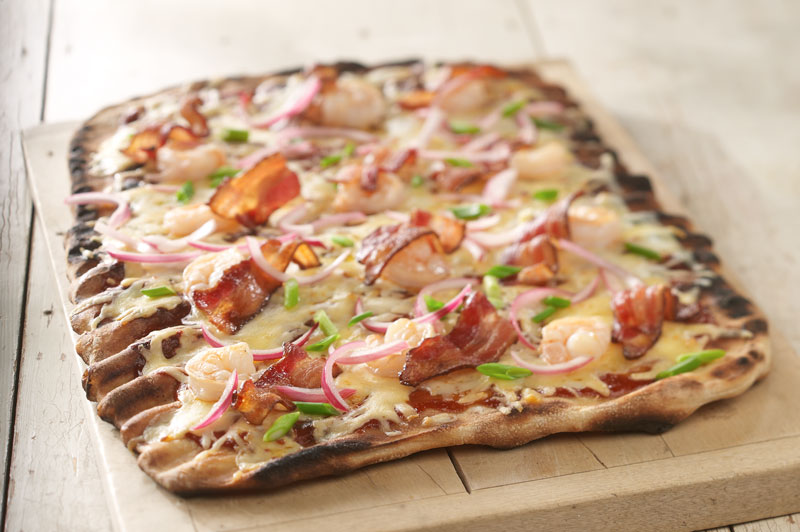
Barbecue Shrimp and Bacon Flatbread with Cheese |
| Recipe by Chef Tracy O’Grady; provided by Wisconsin Milk Marketing Board
Ingredients: Barbecue Sauce: Flatbread: Directions: Heat grill to medium-high. Oil the back of a flat metal tray with 1 tsp. olive oil. Press dough into a 12”-by-15” rectangle on the back of the tray. Place the dough side of the pan directly on the grill. Grill 1 minute. Gently remove tray, starting at the front edge (use a metal spatula if necessary). Continue grilling the dough for about 5 minutes, watching carefully to avoid burning. Flip dough and move to a cooler spot on the grill. Spread the entire crust surface with barbecue sauce and top with cheeses. Place shrimp evenly over the top and cook flatbread until crisp and bubbly. Just before removing from the grill, top with bacon. Remove to a cutting board and cut into 12 squares. Top with pickled red onions and scallions. Serve immediately. Serves 6. |
LaMarca believes in the power of advertising, both through traditional and social media. “From our soft launch on August 3 to our last major advertising campaign on October 20, sales of the Sei Cheese Pizza have increased two to three times over its prior sales numbers,” LaMarca notes. “We have since launched an online ad through our Facebook page and have seen an immediate increase of more than 100% in sales again!”
When adding any new cheese to your ingredients list, make sure it can be used on more than one menu item—preferably several, Firenza’s co-founders say. This helps ensure freshness and keeps inventory to a minimum for ease of tracking. For example, Wood suggests adding breadsticks or a cheese bread appetizer that incorporates your range of cheeses.
Topper’s Pizza Canada, with dozens of locations in Ontario, did just that when launching its Extreme Cheesy Sticks (featuring cheddar, mozzarella and Parmesan) last October, and the brand knew that pictures would be worth a thousand words when selling the indulgent pull-apart item. “Each image showcases the infusion of cheeses on the pizza,” notes Emaan Toppazzini, director of menu innovation. “Then the consumer can easily imagine themselves biting into a slice of decadence.”
Finally, do your research and be exacting when it comes to portioning. Before adding new cheeses to your menu, make sure it’s a financially wise move. “There’s a wide variety of cheeses out there, with so many flavor profiles,” Baer concludes. “Price out any cheese before adding it, and figure out how much is needed to produce the taste you desire. Often, you’ll find that a little additional cheese will go a long way. Then ask yourself if this new flavor is worth the investment—and can you afford to not make this additional investment?”



